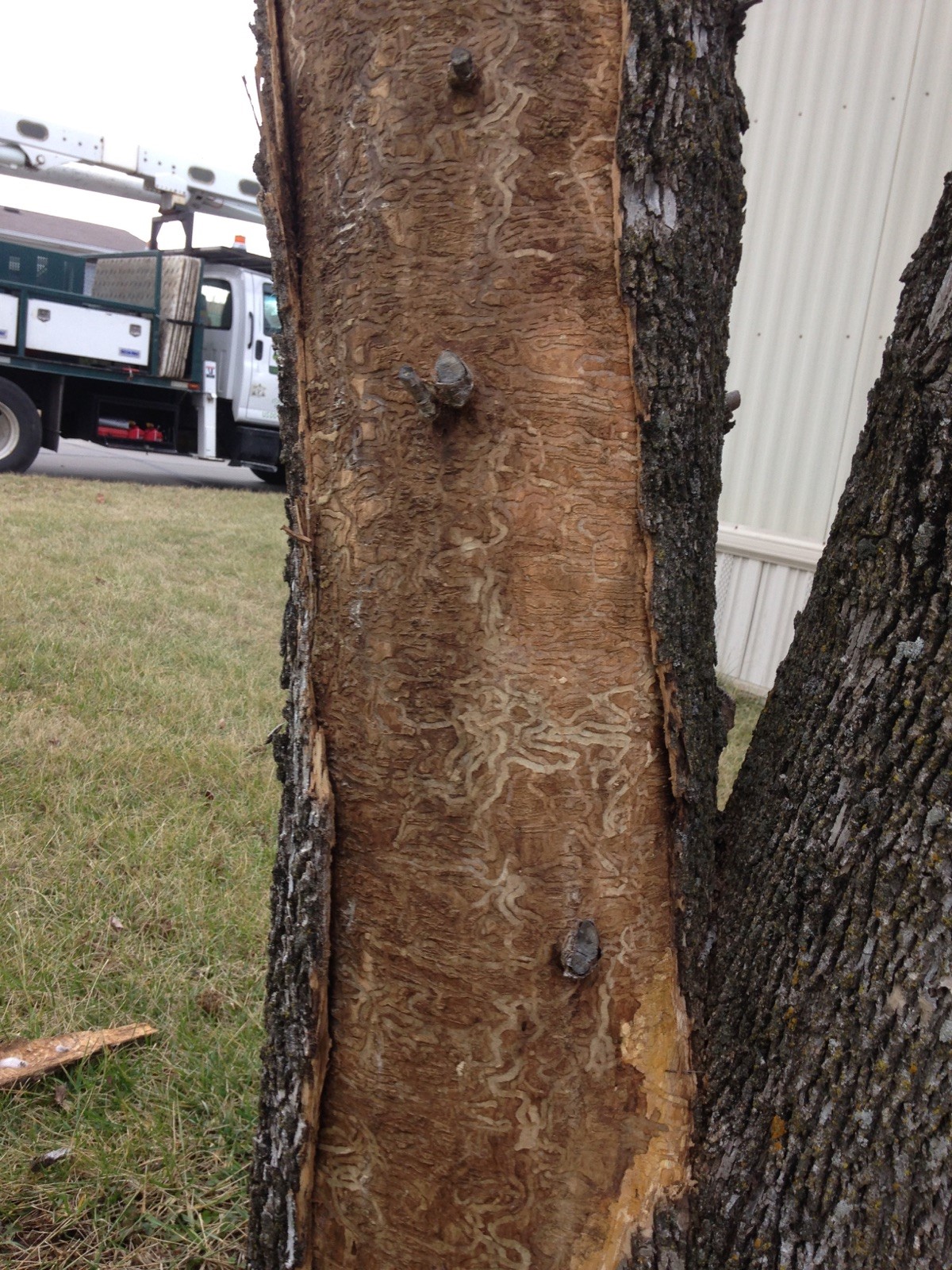Blog, Disease & Pest Prevention, Plant Health Care
Recognizing, Treating, & Preventing Borer Infestations
Borer infestations are a headache no tree owner wants to think about. Not only do these beetles threaten your trees and make them look unsightly, they can potentially spread and severely damage trees beyond your own.
Learn more about two borer infestations we see here at Hansen’s and how you can help identify, treat, and prevent the spread of these species:
Emerald Ash Borer
What Is It?
Emerald Ash Borer, or EAB, is a highly invasive species of beetle that attacks ash trees. It is now considered to be the single most destructive invasive pest in US history. EAB has been confirmed in 27 of 50 states, Missouri and Illinois included.
What Are The Symptoms?
Symptoms of EAB on ash trees include:
- Canopy dieback within a year of infestation
- Increased woodpecker activity and foraging, indicated by flaking or holes in the bark
- S-shaped larval galleries visible just under the bark that are formed when EAB larvae feed on the tree’s vascular tissue
- Splitting bark from the drying of the wood
- D-shaped exit holes when the larvae mature and burrow out of the tree
- The presence of EAB larvae and adults
Your tree may also grow epicormic shoots, or extra growth from the roots and trunk. This is a sign of stress on your tree and sometimes an indication of EAB.
If your ash trees are showing signs of EAB, contact a Certified Arborist immediately to treat and help prevent its spread. EAB is particularly destructive as it attacks and kills ALL ash trees whether the trees have been weakened and predisposed or not. Healthy ash trees are just as vulnerable as weakened or stressed trees.
How Do I Treat It?
If your ash is infested with EAB, you will have to make the decision to treat the tree or remove it . If you choose to treat, know that effective treatment options last for 1-2 years, so you will have to repeat treatments for the life of the tree. Ask yourself if you are willing to keep up treatments. If not, it is recommended that you remove the tree.
Experts also encourage treatment of all ash trees you want to protect, even prior to any visible symptoms. Waiting for symptoms to appear may be too late for effective treatment. If the tree’s canopy is more than 30% dead due to EAB, treatments will not be effective and the tree will need to be removed.
Do not transport wood that has been infected with EAB. This will cause EAB to spread to other areas where it may not be present.
Bark Beetle
What Is It?
Bark beetles are small beetles with hard, cylindrical bodies about the size of a grain of rice that make their home under the bark of trees. There, they can reproduce and burrow into your trees. Some species of bark beetle are native and can be beneficial to an ecosystem, but when they are an invasive species or too high population, they can wreak havoc on your trees.
While some species of bark beetle feed on live trees, others will attack dead or dying ones. Most borers will prey on trees that are weakened or stressed from drought or other factors. Keeping trees healthy with proper health care is the best defense.
Remember, even after your tree has died you may not see evidence of the death for months, allowing bark beetles to settle in.
What Are The Symptoms?
The symptoms of bark beetle include:
- White or reddish-brown pitch tubes on the outside of the bark.
- Borer holes in the tree when the bark is peeled away
- Flaking or holes in the bark from woodpecker foraging
- Frass (a sawdust-like substance) around the tree and in tree crevices, an indication of burrowing
If your trees are affected by bark beetles, their leaves or needles will begin to lose their color and turn brown.
How Do I Treat It?
Similar to EAB, it is essential that you treat your trees and taking other preventive measures before the beetles can infest them. This means pruning your trees of dead and dying branches and having your trees inspected by a professional tree care service like Hansen’s.
If bark beetle damage is evident, trees may be treated with chemicals and followed up by plant health care such as proper watering, mulching, and care.
If you suspect that your trees are under attack by borers, please contact your tree care company to diagnose the problem and treat it as soon as possible. In doing so, you will not only be protecting your trees, but the trees of your neighbors.
To help prevent your trees from being infested, schedule tree care consultations. The attending Certified Arborist will be able to identify trees that pose an unacceptable risk to your property and diagnose any problems.
